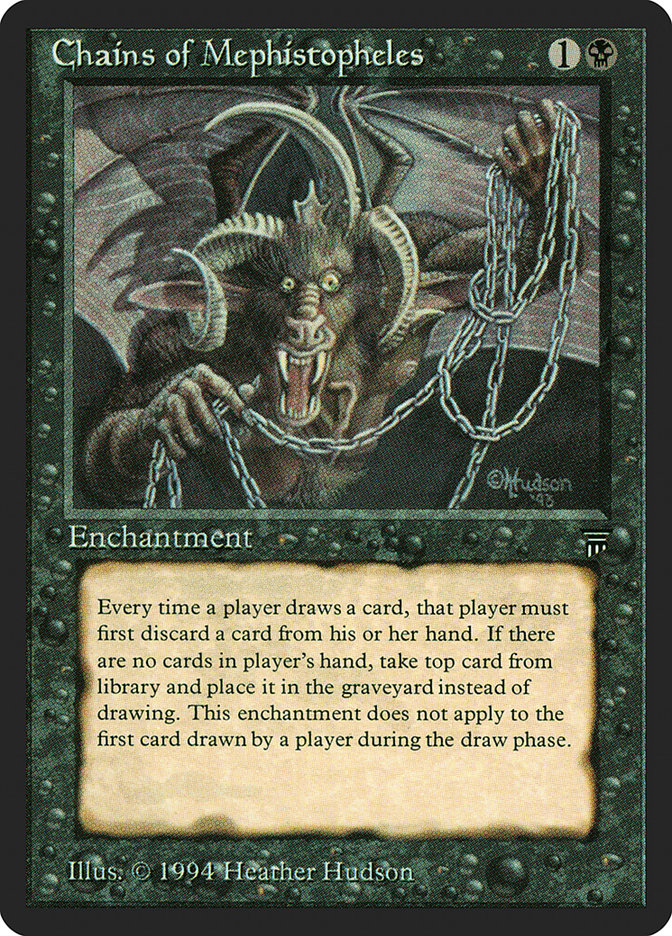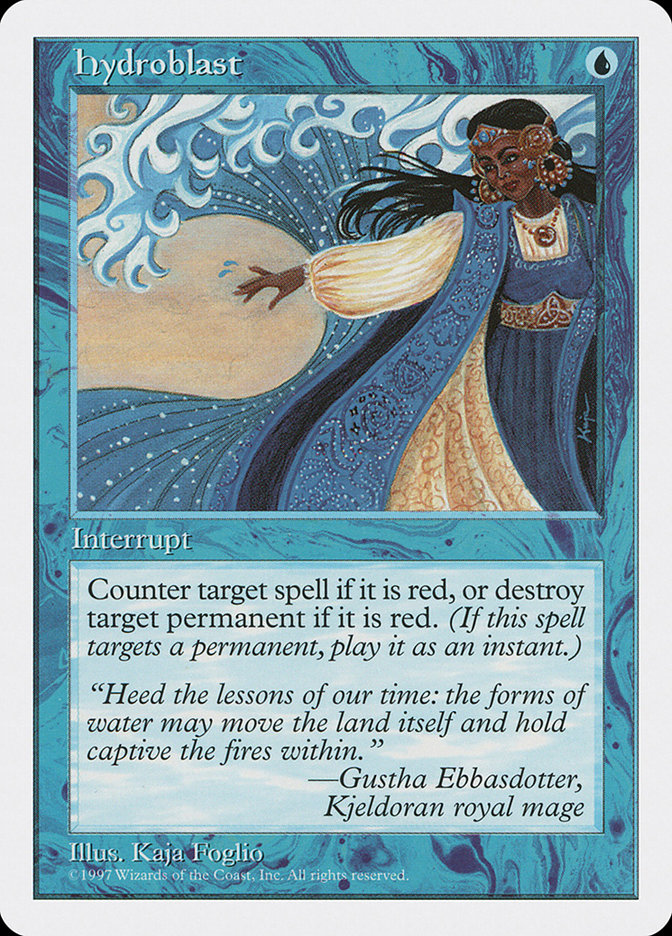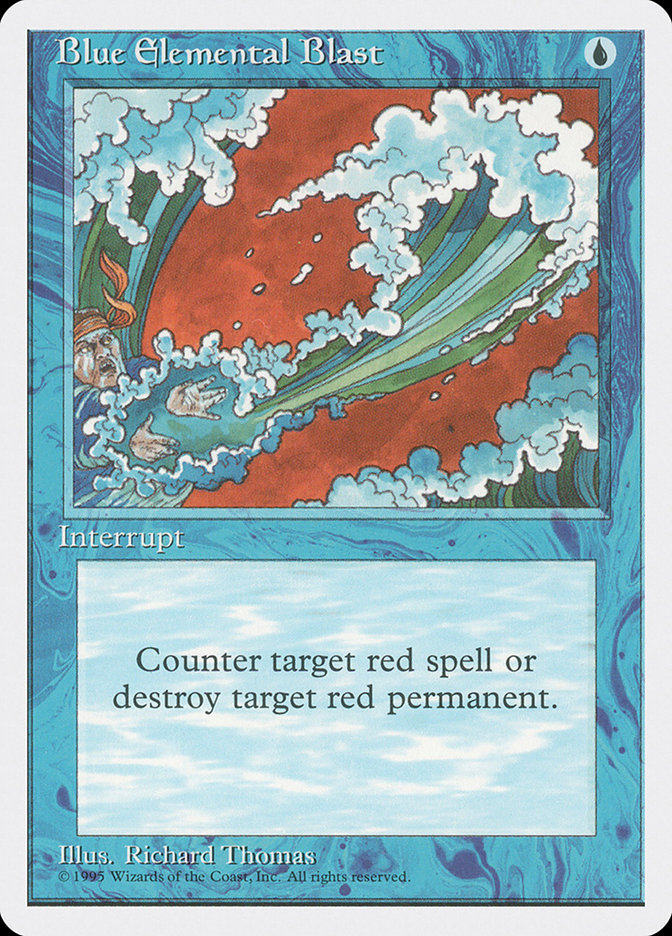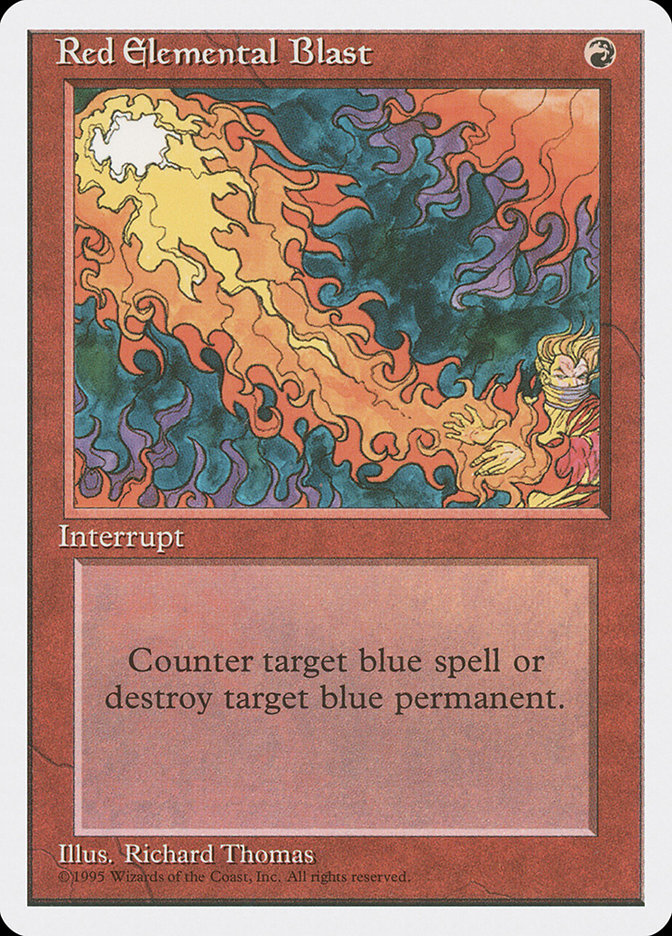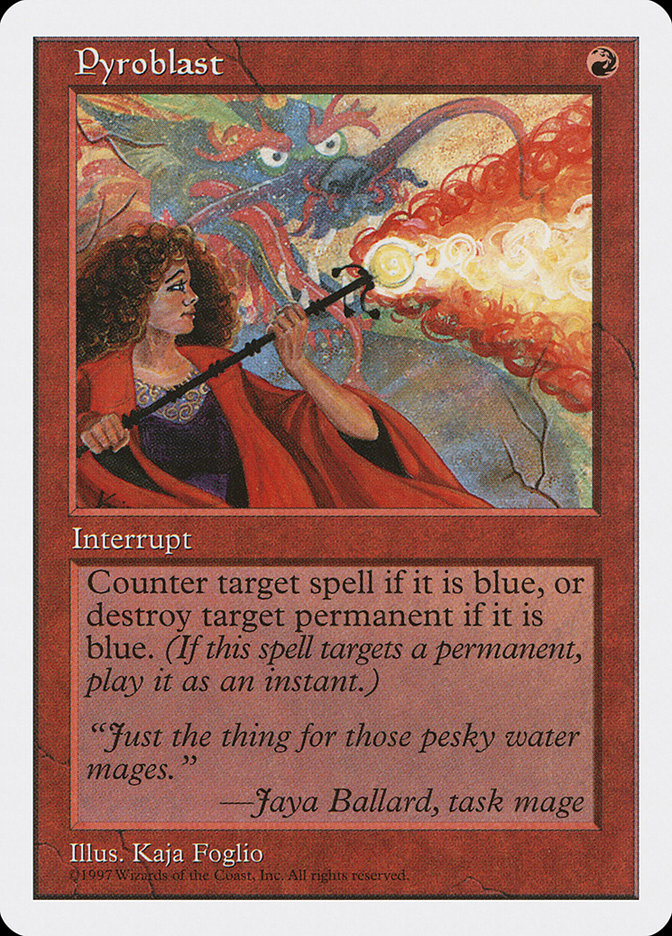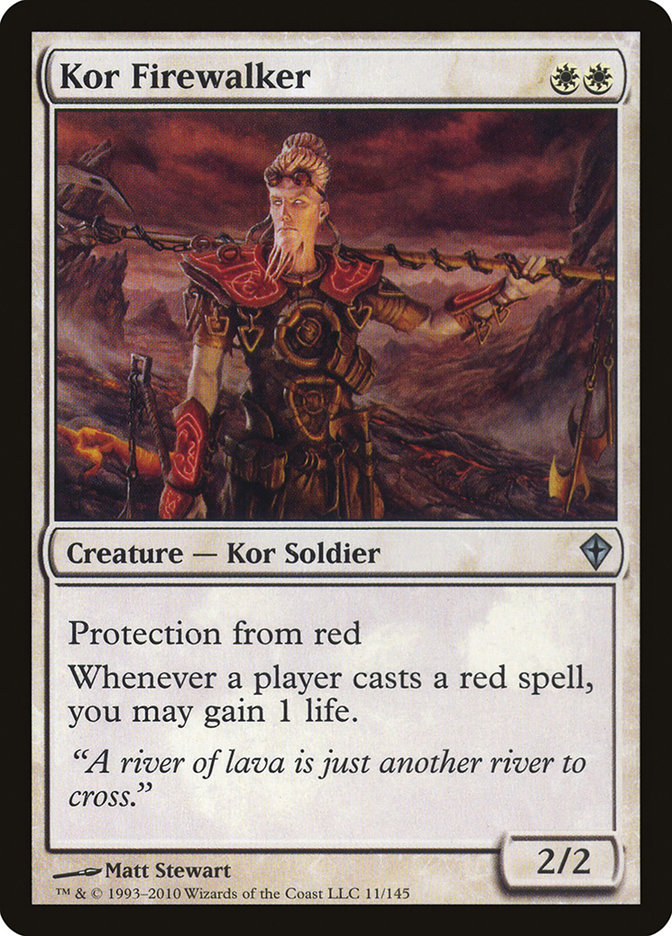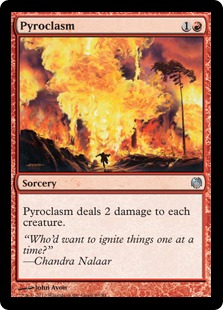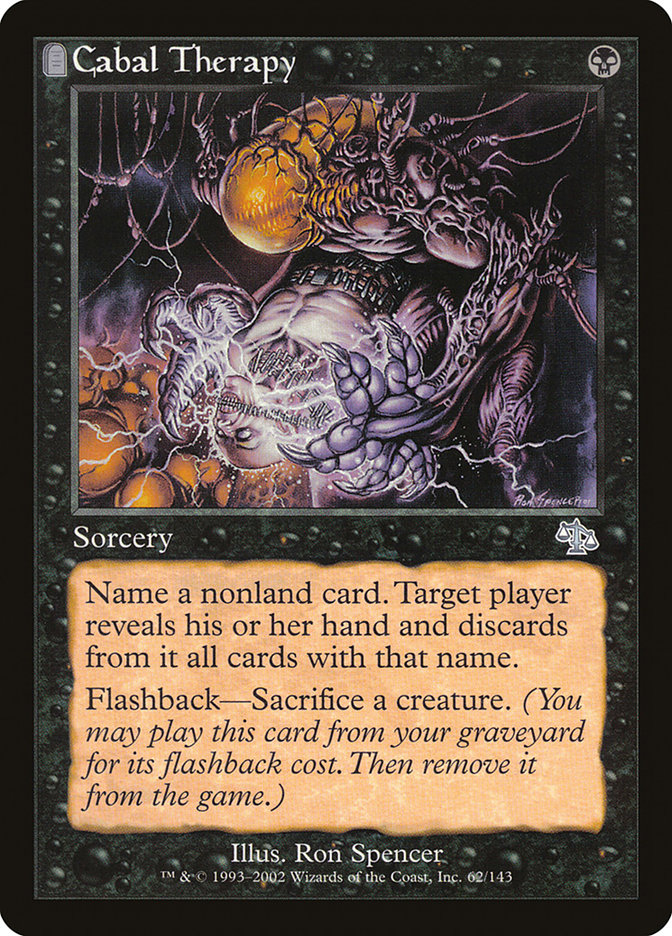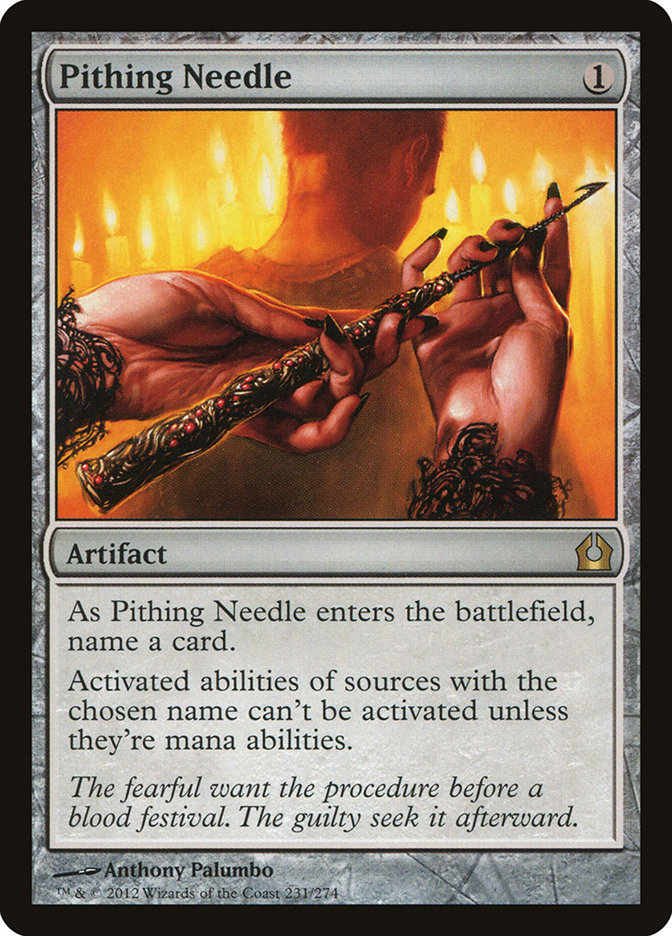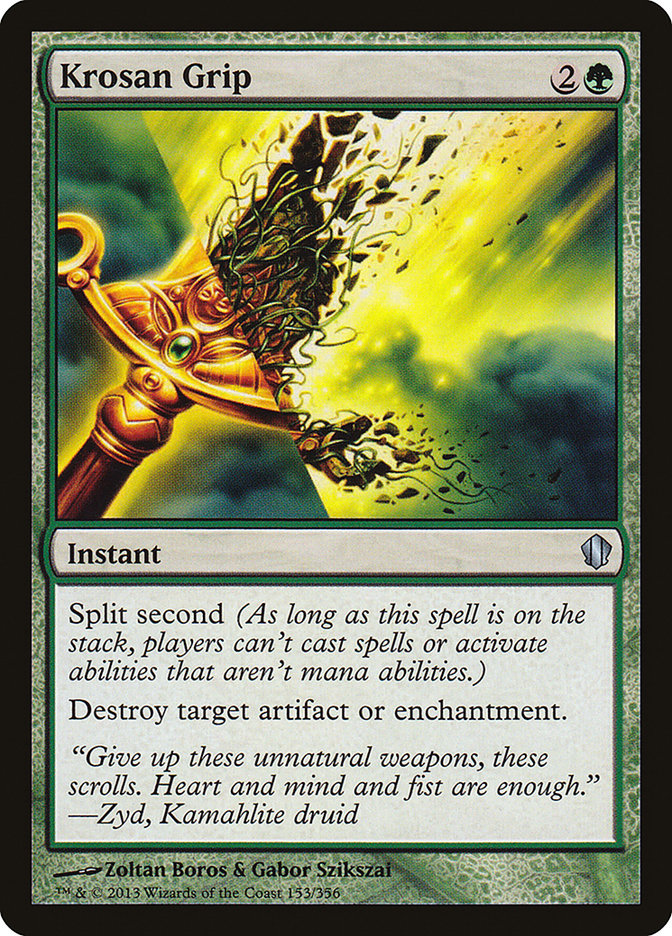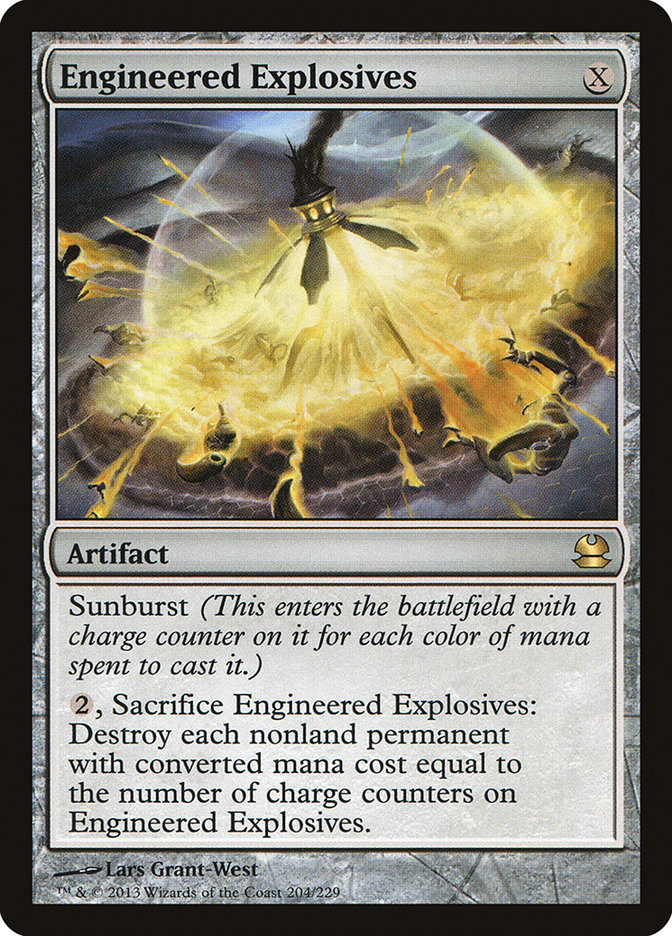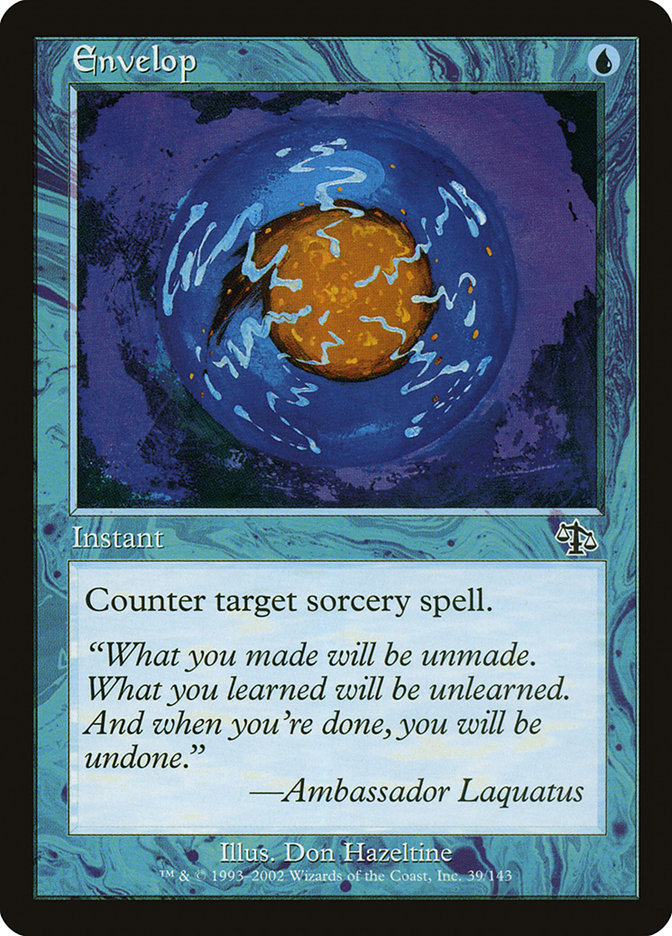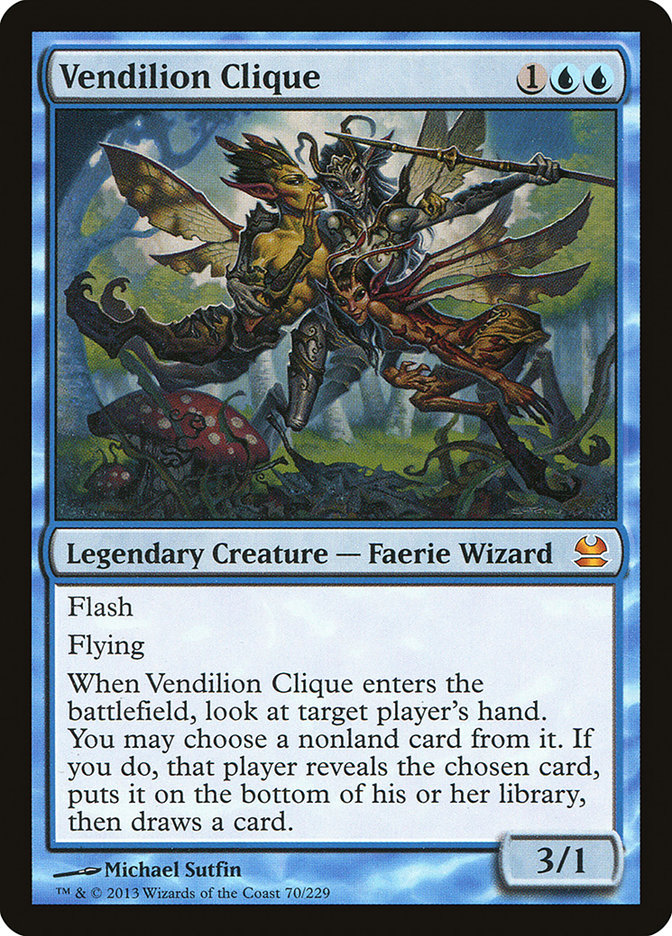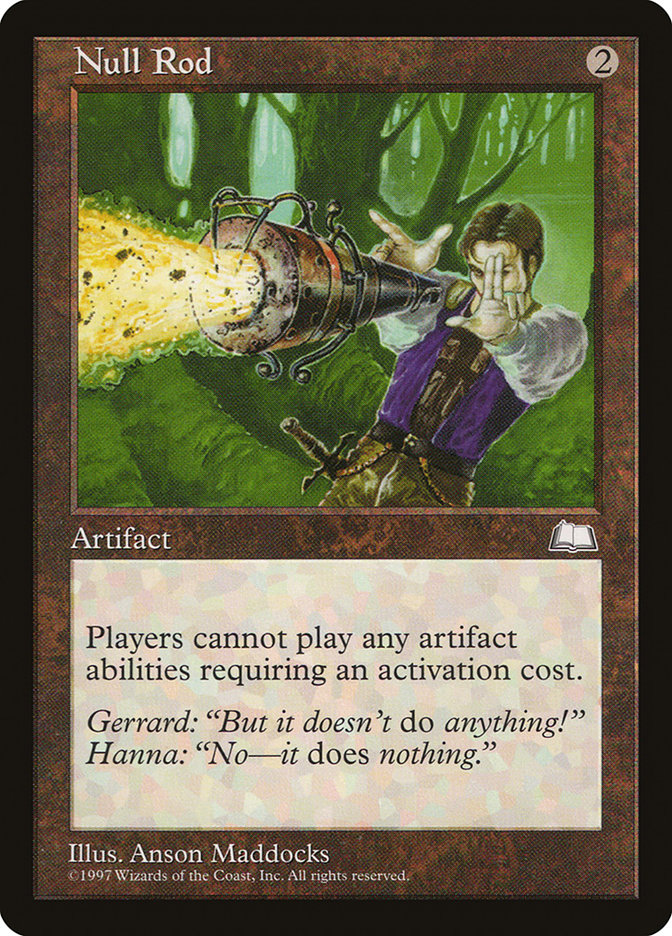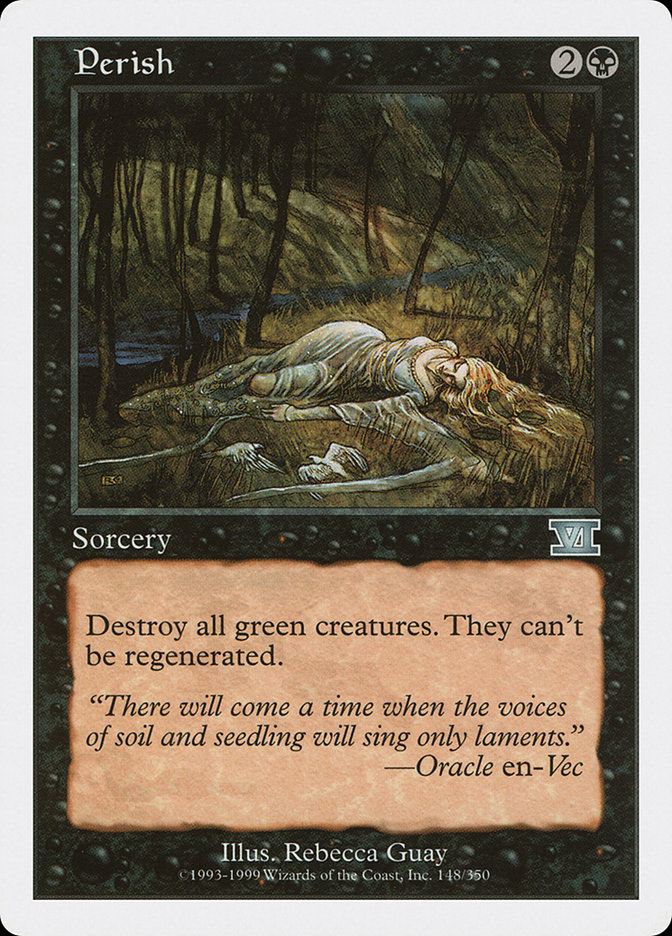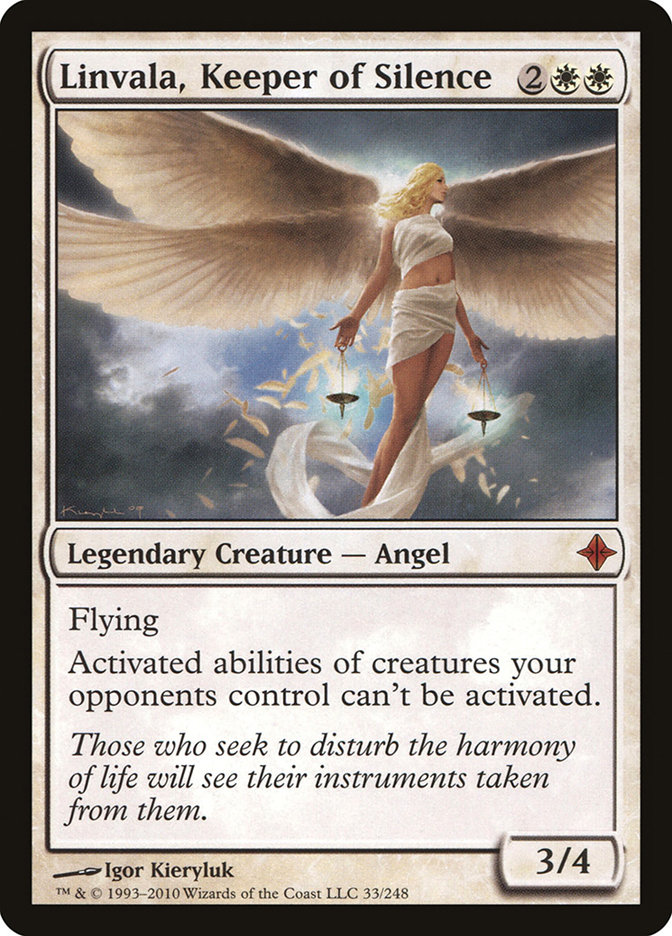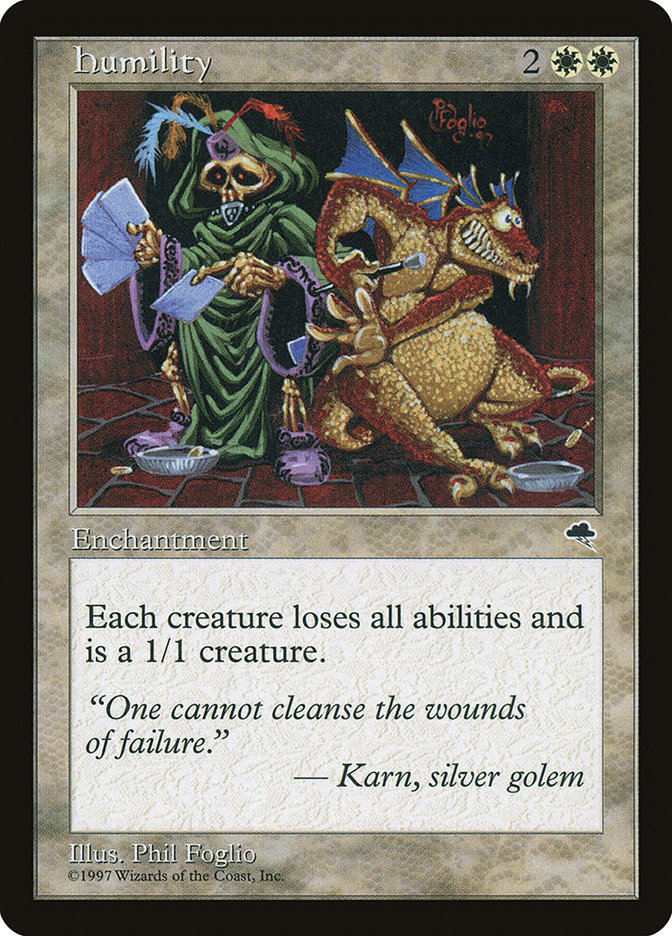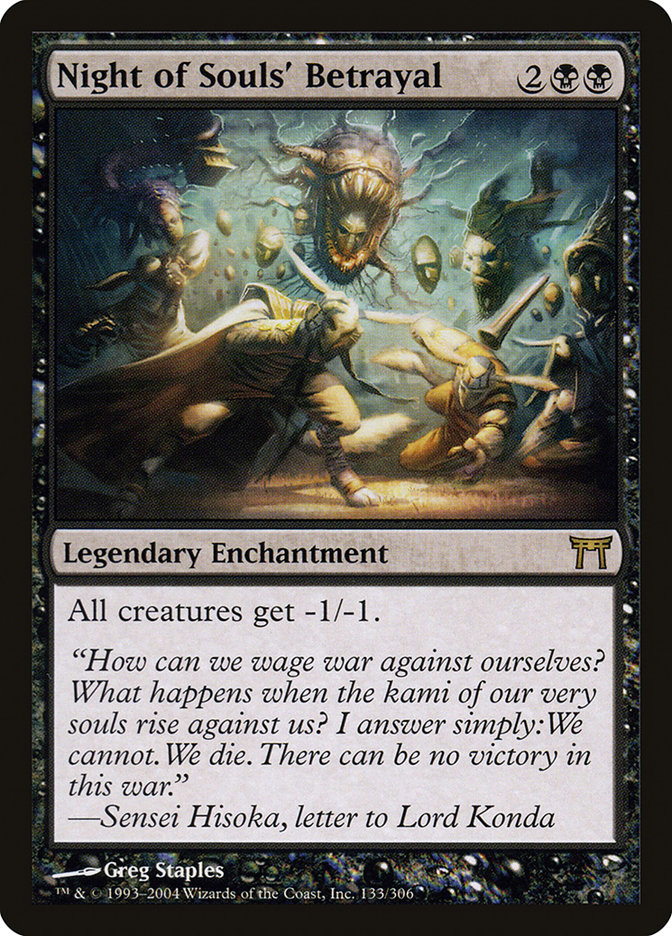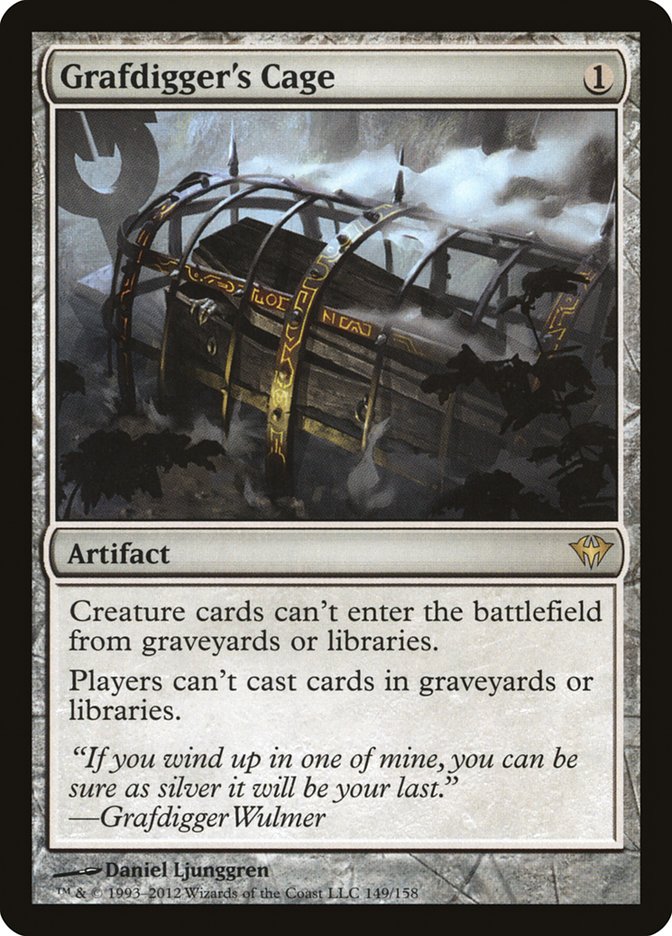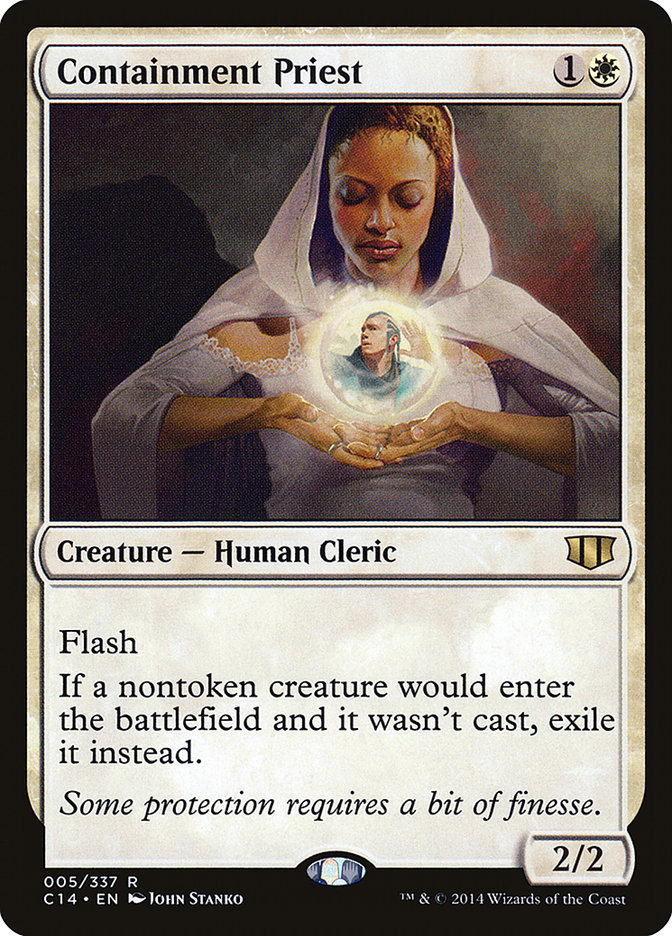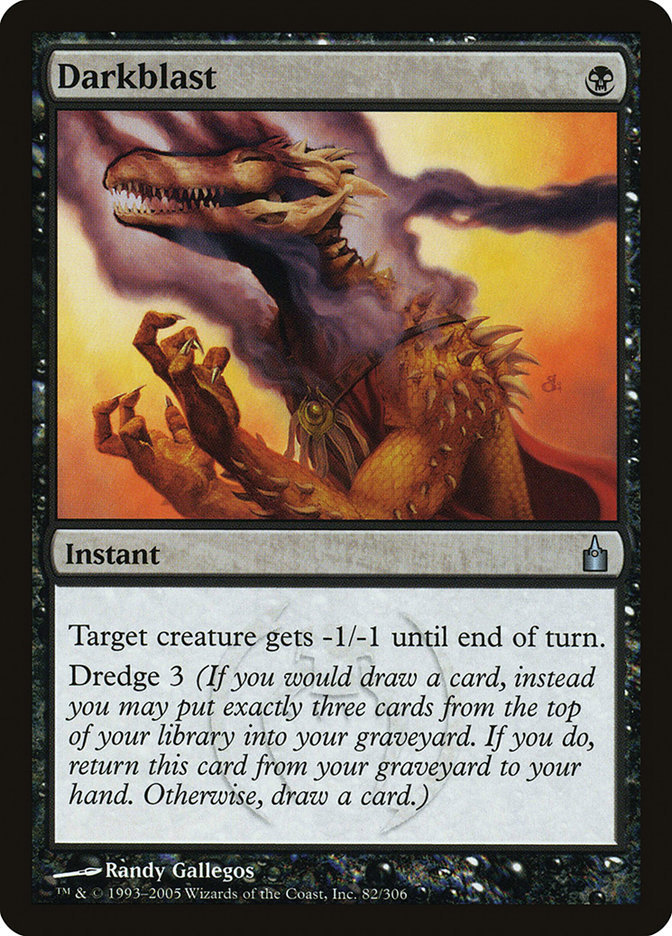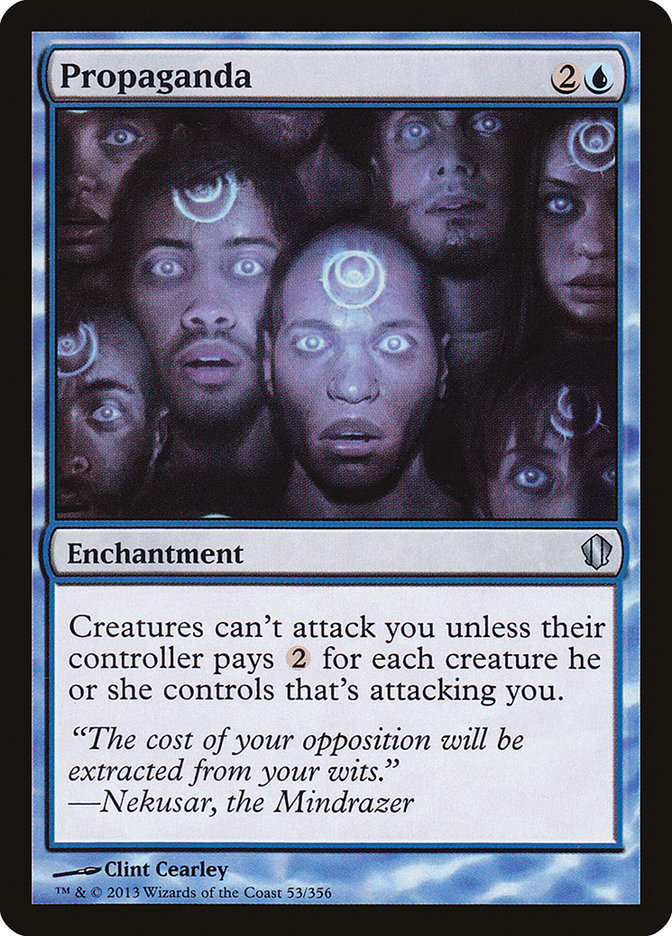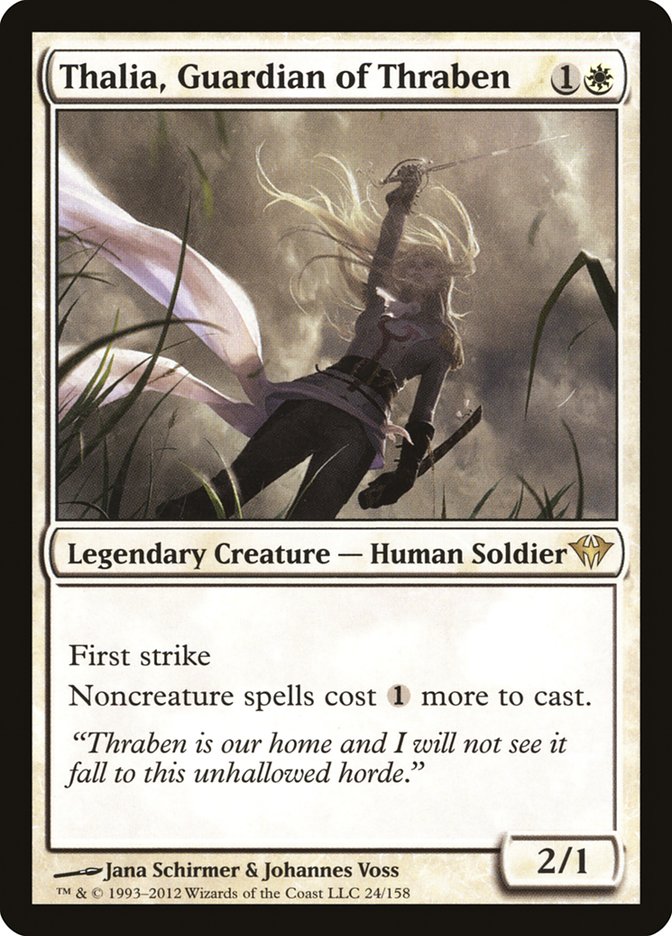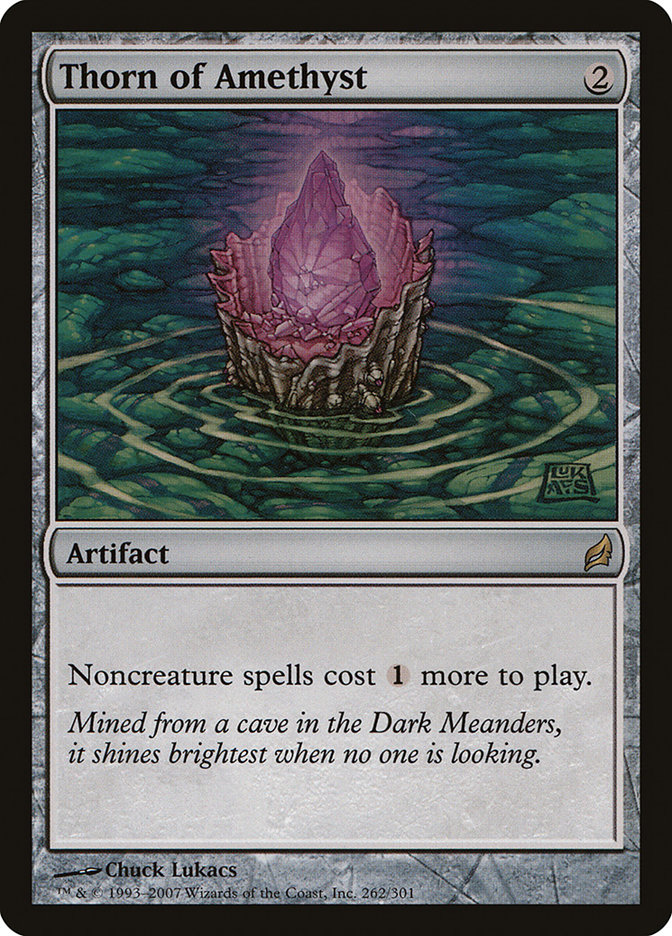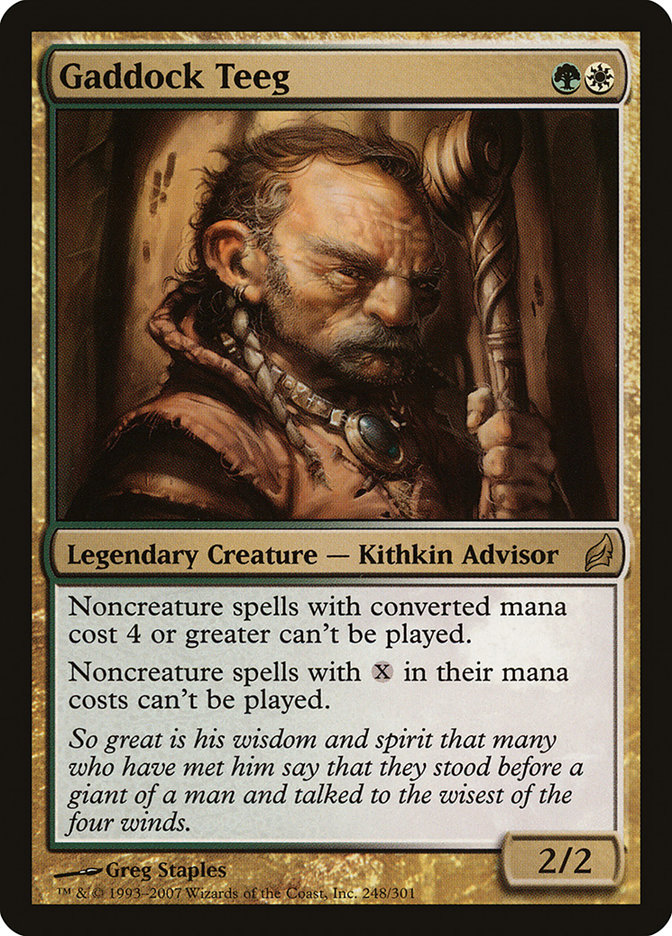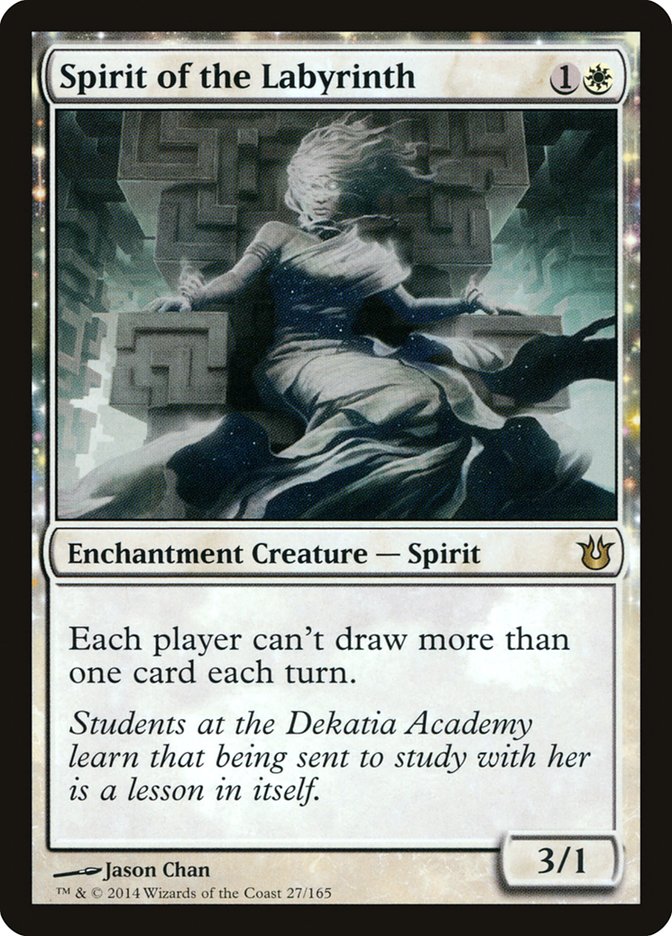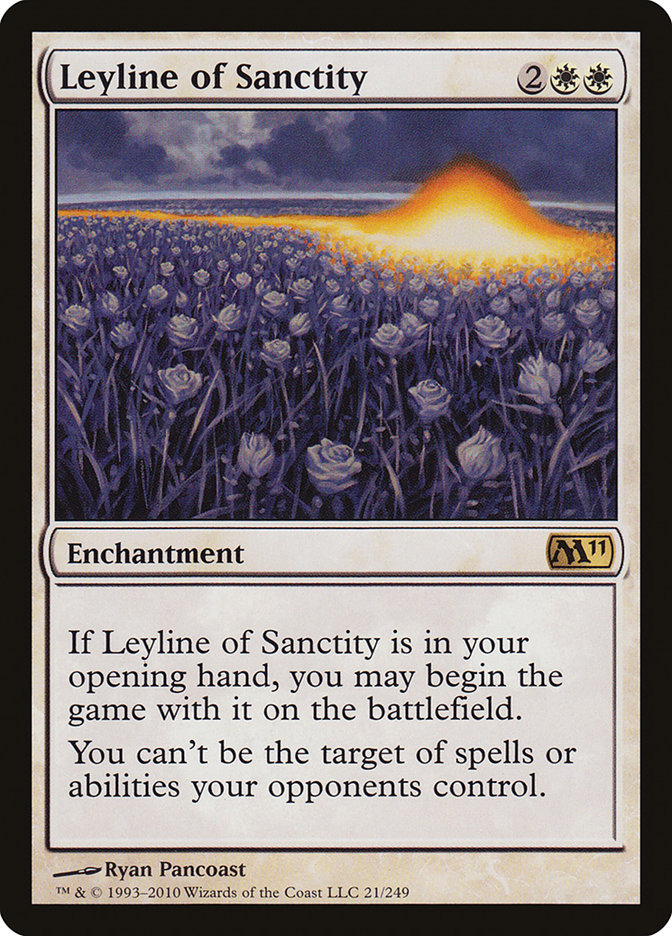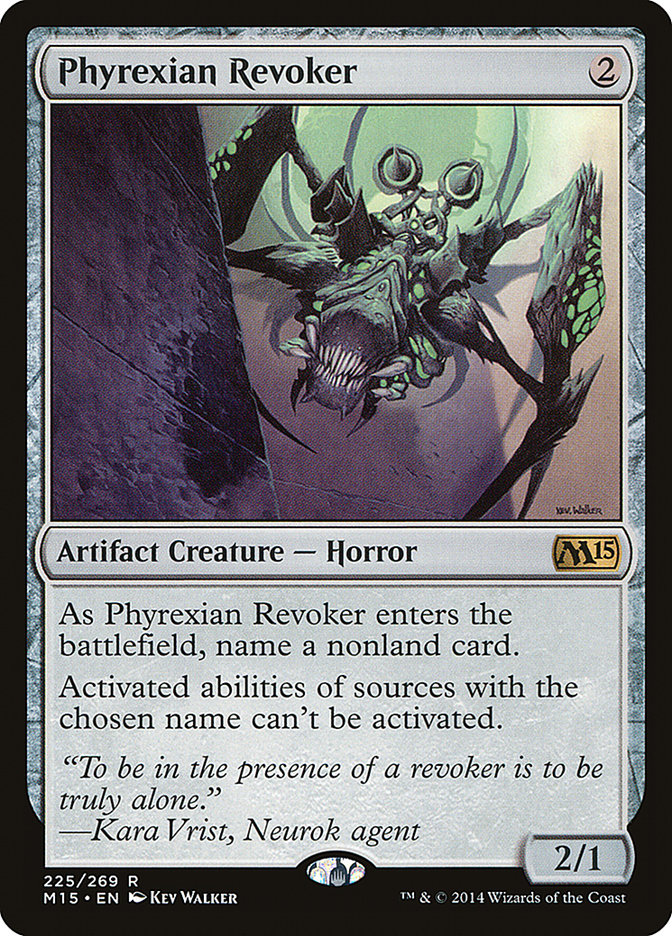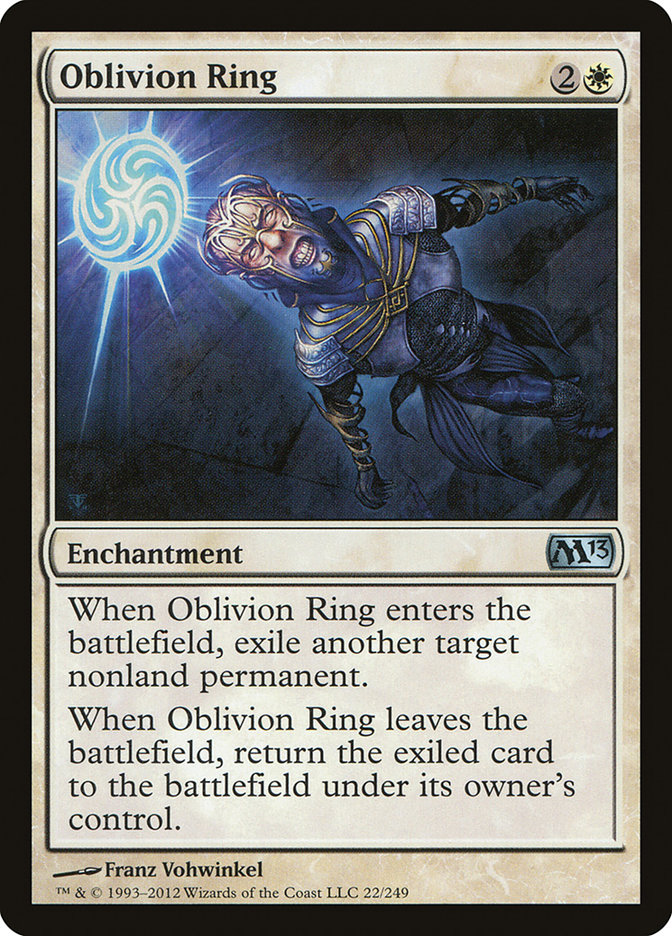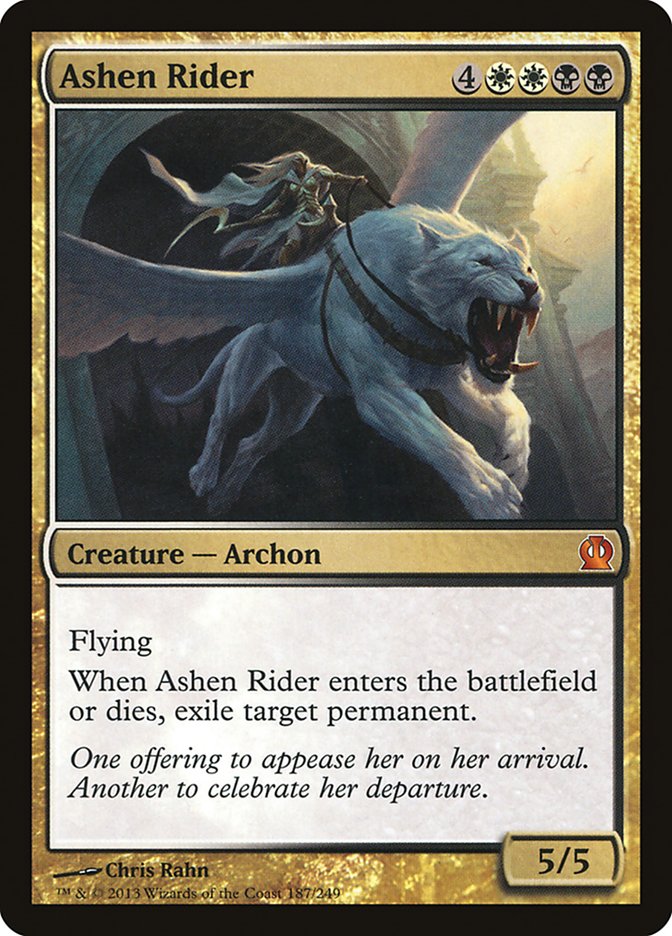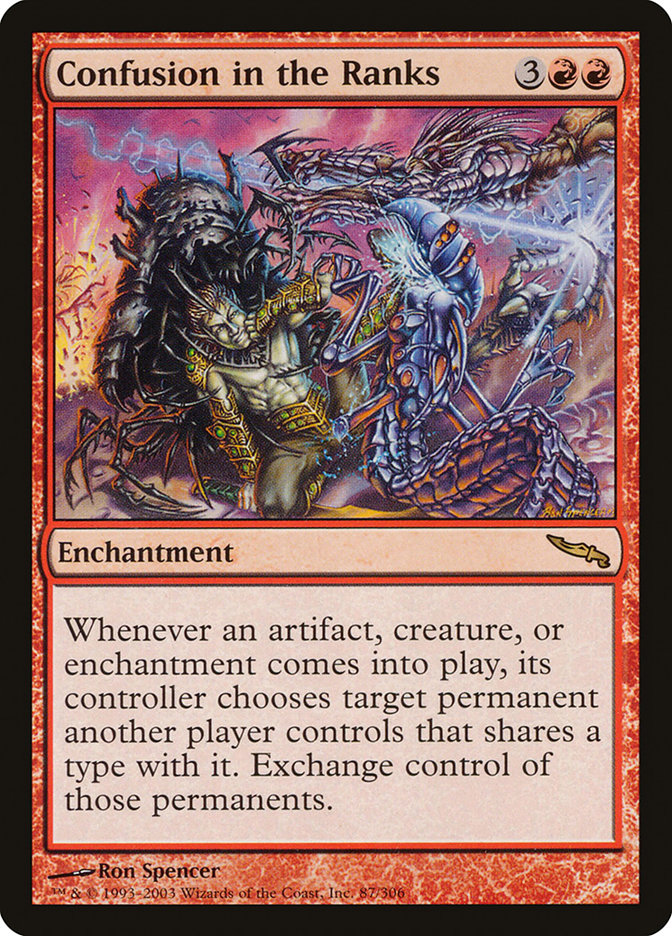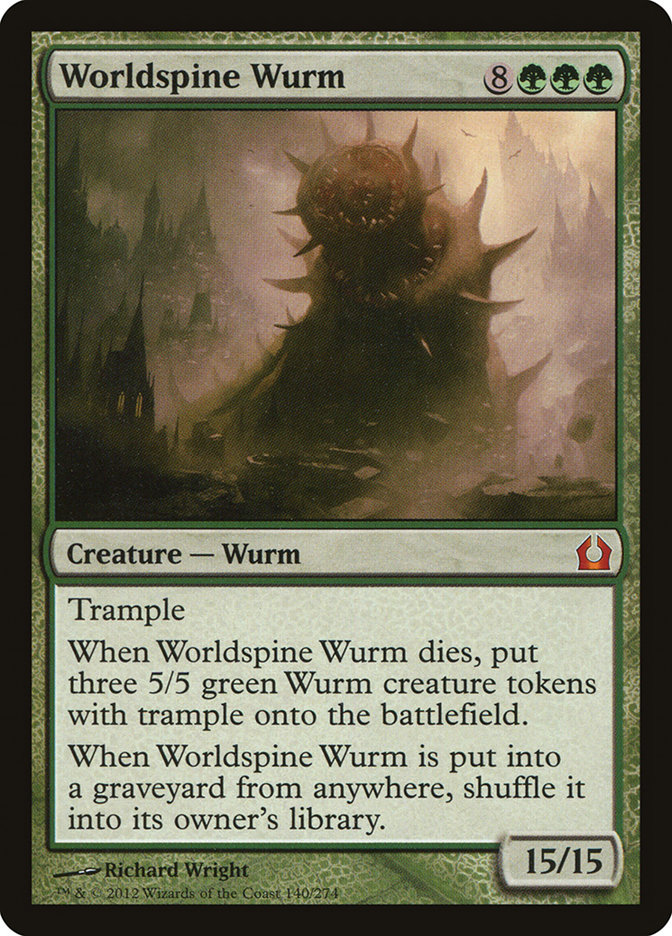If you’re attending Grand Prix New Jersey, there’s a pretty good chance you already know what you’re playing. It can be hard to switch decks at the last
moment for Legacy, since not many people own every playable deck, so as we get to this final push before the Grand Prix, I think it’s a little late in the
game to be telling you what you should play. What you probably still have time to do is tune your list a little, especially your sideboard, so today, I’m
going to discuss the sideboard cards that I think are best against several of the top decks and why. If you’re not sure about the last few cards in your
sideboard (and I think you probably shouldn’t be), I hope to give you some solid ideas. Let’s just get straight to it.
U/R Delver
This seems widely expected to be the most played deck, which makes a lot of sense, as it’s consistent and powerful. It plays all the best cards that
everyone always wants to play, and it got great new tools in Monastery Swiftspear (who is definitely the real deal) and Treasure Cruise (which is way
beyond real).
This is probably the hardest card for them to beat. A lot of decks are too hurt by it to play it, but if you remember just how crippling it is for them, it
can be worth playing even in decks that generally think of it as a card that’s bad for them if you really need to find a way to get an edge here. Outside
of that situation, it might be more of maindeck card than a sideboard card at this point, as most decks that can safely cast it at X=1 should probably be
playing it main. If I had a Jund deck or something, I’d probably want this in my sideboard though, and I’d plan to board out Thoughtseize to bring this in.
This is another card that hurts most decks enough that there’s a good chance your deck has to be specifically designed to be able to use it, at which point
you’re probably playing it main, but if you’re not, it’s definitely great against U/R Delver and most blue decks in the format. If you’re playing it main,
you might consider more in the sideboard.
You can tell the format’s warped by the fact that, like the above cards, there’s a good chance you’re already planning to play Pyroblast main. If you can
cast either Blast, you probably want access to it. U/R Delver is all about mana efficiency, and while these might just be one-for-ones that don’t really
get you ahead on mana most of the time, they’re the best you can do, because bigger, more expensive hate is just going to be worse against Daze.
I think this card doesn’t see enough play. Combo decks often use it against blue decks, but I think fair green decks could be using it too. It’s an
incredible mana source against people who will always have an island or two, and while you might not be excited by the prospect of just boarding in extra
lands (essentially), you have to realize that these decks are trying to beat you on mana efficiency, so getting far ahead on mana production can allow your
more expensive spells to compete while turning off their Dazes, and they have no real way to answer this once it’s in play. Any kind of midrange green
deck, and especially Nic Fit style decks, should strongly consider sideboarding Carpet of Flowers for Grand Prix New Jersey in particular.
Two is about as much mana as I’m willing to play to try to attack this deck, and Kor Firewalker won’t beat them by itself, but they often have no way to
get it off the board, and it makes it much harder for them to burn you out while shutting down Monastery Swiftspear and making Young Pyromancer work a lot
harder. It needs to be combined with a proactive plan and answers to Delver of Secrets, but this can certainly be a piece of the puzzle.
This kills all their creatures unless they can cast a spell to save their Monastery Swiftspears, and it’s one of the best ways to avoid falling behind
against Young Pyromancer. This is good if you just need time, but it is even better if you’re playing creatures that live through it so that you can Plague
Wind them for two mana and end the game in a hurry. Potentially great for Temur Delver (with Nimble Mongoose) in particular.
These cards are fine ways to clean up against Young Pyromancer, and the price is right. There are better options for this matchup in particular, but if
you’re looking to cover multiple matchups with a single slot, there might be enough utility here that you can consider it a slot for this matchup if you’re
playing the cards for other reasons (Elves and Death and Taxes in particular).
This one feels like a weird sideboard card, but in a matchup that’s all about mana efficiency, answering Delver of Secrets or Young Pyromancer for no mana
can be a big deal.
Consider this if, and only if, you’re playing at least four Wastelands (I say at least because you might also have Ghost Quarter). Against some people,
Wastelanding a Volcanic Island and targeting it with Surgical Extraction will be crippling. Against others, they’ll just shrug and fetch two Islands and a
Mountain and you’ll have thrown away two life and a card. Still, it can absolutely steal a game against people whose only non-fetchlands are four Volcanic
Islands and one Island.
I don’t recommend going out of your way to fight their graveyard with anything short of Rest in Peace, since they’ll likely be able to Treasure Cruise
anyway (Leyline of the Void does prevent this, but the opening hand restriction to me makes it not worth the risk of including it in my deck), and I’m not
excited about Rest in Peace. Don’t waste your time with things like Relic of Progenitus or Nihil Spellbomb unless you just don’t have anything else to do,
and I think the matchup is important enough that I wouldn’t want to play a deck that has to have those cards in for the second and third games.
Temur Delver
Chalice of the Void and Chains of Mephistopheles are still great. Blasts are still great, but Hydroblast is a little worse because they’ve replaced red
threats with green threats. Kor Firewalker and Pyroclasm are pretty bad, because they no longer match up well against the creatures. Same goes for all the
red burn spells.
Rest in Peace is great if they have Tarmogoyf and Nimble Mongoose, and very solid if they have either. In general, I’m happy to bring in Relic of
Progenitus, Leyline of the Void, or Nihil Spellbomb here, where I wouldn’t want them against straight U/R. Grafdigger’s Cage still obviously doesn’t do
anything.
Submerge is the only other important card I’d want here that I wouldn’t want against U/R Delver, which offers a great answer to Tarmogoyf and can also
answer Delver of Secrets if they have Tropical Island, which they’re likely to have.
Perish becomes playable against this kind of deck, but it’s not where I want to be. Sometimes you just need to be able to kill Nimble Mongoose, but I still
don’t want to sideboard in three mana spells against Daze decks.
Sultai Delver
Graveyard hate is still great here because of Deathrite Shaman and Tarmogoyf. Pyroclasm is a consideration again because it kills Deathrite Shaman and
Delver of Secrets, but not great, because it doesn’t answer Tarmogoyf. For the most part, I want the same things that I want against Temur Delver.
One potential difference is that Abrupt Decay is pretty different than Lightning Bolt. It’s clunkier and can’t be countered, which means that blowing it
out is potentially huge if you’re the right kind of deck to really capitalize on a one/two mana swing. Misdirection and Mizzium Skins become considerations
here for certain decks.
Jeskai Stoneblade/Control
It’s hard to knock this deck out with a single hit the way that Chalice of the Void can for U/R Delver. It’s a slower deck that interacts on more axes and
has more versatile answers to permanents, as well as a wider range of threats. For the most part, you’re going to beat them more by executing your gameplan
than by stopping theirs, which is really to say that they’re the control deck. That said, there are a few cards that can help.
Pyroblast and Red Elemental Blast are still excellent here, since they’re mostly a blue deck.
Cabal Therapy has always been my favorite way to fight Stoneforge Mystic. Stoneforge Mystic decks are often counting on the fact that their artifacts are
hard to answer, and Cabal Therapy does that perfectly while giving information about their hand and flashing back to hit something else. Never try to snipe
the Stoneforge Mystic out of their hand, they’ll just find another one and get the equipment that they actually care about. You usually don’t need to worry
about the actual 1/2 body. Against Stoneforge Mystic decks, I wait to cast my Cabal Therapy until they’ve had a chance to cast Stoneforge Mystic, then I
name the equipment they showed me, and flash it back with the information I’ve gained.
Smelt and Ancient Grudge are important if you can’t Cabal Therapy them. These decks rely pretty heavily on Umezawa’s Jitte and Batterskull for their
lategame power, and if you can kill them, sometimes it can be hard for their deck to actually beat you.
This isn’t quite as good as it is against Miracles, since they don’t have Sensei’s Divining Top, but they probably have Jace, the Mind Sculptor in addition
to Umezawa’s Jitte (and Batterskull, if you can easily kill the token), so it’s probably worthwhile.
Other counterspells are probably mostly pretty good too, but Spell Pierce will often be particularly good here as they have a relatively high number of 3-4
mana non creature spells (Council’s Judgment and Jace, the Mind Sculptor) in addition to important two mana spells like Counterspell and Dig Through Time.
Miracles
Pithing Needle, as mentioned above, is one of the best cards against Miracles. It’s by far the best answer to Sensei’s Divining Top, which is their most
important card, and it also fights Jace, the Mind Sculptor and Helm of Awakening if that’s their kill, or equipment if they’re playing Stoneforge Mystic.
Of course, either way, you’ll still have to deal with Entreat the Angels.
Krosan Grip is another reasonable way to fight Sensei’s Divining Top, and it kills Rest in Peace/Energy Field/Counterbalance. Abrupt Decay is the other
reliable way to get Counterbalance off the table.
Another solid answer to all the two mana enchantments.
I mentioned that you’ll still need to deal with Entreat the Angels, which this does, as well as countering Terminus. I wouldn’t want a lot of these, but
this is one of the matchups (in addition to Elves, Sneak and Show, Dredge kind of, and others) that make this card somewhat appealing.
One of the better answers to a miracle is to take it out of their hand in response to the miracle trigger.
A little clunkier than Pithing Needle, but it accomplishes most of the same jobs, sometimes while doing double duty.
Elves
Anything that kills all of their creatures is going to be pretty good. Massacre is somewhat questionable, since they don’t always have Savannah in play
even when it’s in their deck, but I’d probably board it in rather than not if I had it in my sideboard (it likely ended up there to fight Death and Taxes).
The four+ mana spells and Engineered Explosives are a little bit worse if your opponent expects them, and you’re low on answers to Gaddock Teeg.
This card is extremely difficult for them to beat. They can still win with Natural Order or find a Reclamation Sage, but their deck does very little while
it’s in play.
Realistically, she’s too expensive unless you have other removal to slow them down, but it’s like a Cursed Totem that they can’t really remove, so it’s a
pretty solid way to lock them out if you can slow them down.
This is a card that’s really overperformed for me against Elves. It’s particularly great if you’re playing a Stoneforge Mystic deck, as the combination of
Umezawa’s Jitte + Humility is almost impossible for them to get out of (they need to Abrupt Decay the Umezawa’s Jitte almost immediately).
Not a lot of decks can play this, but it’s similar to Humility. It mostly clears their board when it hits play, so it can be better at stabilizing against
their aggro plan, but it doesn’t stop Deathrite Shaman, so you might be too far behind that anyway, and they can kill it with Reclamation Sage. It also
doesn’t answer Natural Order, which Humility does. Oddly, I think it’s worse overall.
Natural Order and Green Sun’s Zenith are very important to their deck.
Like Grafdigger’s Cage, but a little harder for them to remove, and a good surprise blocker.
Cheap removal spells, especially ones that will answer multiple creatures are great, but they need to be part of a larger plan to really get the job done.
That said, they’re totally valid cards to bring in. Just don’t be shocked if you cast two Forked Bolts and still lose.
Dredge
You probably know how to sideboard against Dredge already–bring in any card that fights the graveyard. Rest in Peace and Leyline of the Void are the best,
but they’re permanents, so the opponent can potentially kill them and keep going. Surgical Extraction or Ravenous Trap happen once without letting the
Dredge player prepare, but often aren’t effective enough. Containment Priest and Yixlid Jailer are harder to remove, but if the Dredge player can remove
them, they don’t do any lasting damage. Jailer shuts them down more, but Containment Priest is better against other decks, and you can flash it back into
play immediately if the Dredge player’s answer is to bounce it, which it likely is. Scavenging Ooze is versatile and can get the job done, but is also very
slow. Deathrite Shaman is similar, but even worse. All the artifacts can be played in any deck, but are also the most expected cards, and easiest to fight,
though Dredge is often unprepared to effectively fight anything.
Bottom line, if you have enough dedicated hate, you’ll beat Dredge. You can play a mix of cards, or the one that you think fits your deck best, of a
combination of cards that you want in other places, like Grafdigger’s Cage and Containment Priest. But, beyond the good cards, what are some fringe cards
that you’ll usually want to bring in, but that aren’t obvious dedicated hate cards?
Thoughtseize is actually pretty good against Dredge if you’re putting them on a clock (which could just mean digging for a hate card) and you’re on the
play. They often have to keep hands that have one way to discard a Dredge card to start their engine going, and if you Thoughtseize it, you can slow them
down by several turns. On the draw, this does almost nothing unless you have a lot of hate and you’re just trying to take their Nature’s Claim, Chain of
Vapor, or whatever answer they have before you play it.
Similarly, any counterspell you can play that can fight over that first discard is going to be pretty good. Envelop, Daze, or Spell Pierce on the play,
Force of Will on the play or draw.
I’m not sure why these are in your sideboard, and they can still be answered like the other hate cards but do less to slow them down in the meantime, but I
would definitely bring it in if it happened to be in my sideboard.
Creatures that kill themselves/removal for your own cheap creatures are good in this matchup. Fighting Bridge from Below can be very important, and cards
like Burrenton-Forge Tender or Goblin Bombardment are great here. It’s unlikely that you’ll have a lot of these in your sideboard, but depending on your
alternatives, you might want to leave Lightning Bolt in your deck with the primary plan of using it on your own Delver of Secrets when things get
desperate.
Ad Nauseam Tendrils
Discard in general is functional, but not outstanding against ANT. While they are a storm deck, they don’t need a big hand to go off. Their basic gameplan
revolves around Ad Nauseam, Past in Flames, or chaining Infernal Tutors, all of which let them go off from relatively few cards in hand. These tools will
potentially slow them down by a few turns, but you’re going to want to put them on a fast clock or find a way to lock them out if this is your plan.
Chalice of the Void is an option, but the problem with it is is that it’s effective at X=0, 1, or 2, which means that each can be beaten by the cards at
the other costs, but any of them can happen to be thoroughly crippling for a particular draw. It won’t always win, but it’s definitely worth bringing in.
I haven’t mentioned this in other places where it’s solid because it’s often quite good, and it’s usually a maindeck card. Against ANT it’s particularly
devastating, and it’s devastating in the exact right way. I’ve found that counterspells, discard, and Stifle rarely do as much as you want them to, because
ANT usually just casts Duress and Cabal Therapy before it actually tries to kill you, and your cards don’t do much. Cards that you can put in play that
stop them are much more effective, as they’re less naturally set up to deal with them.
Like Thalia, but it can’t attack, so it’s worse, but any deck can play it.
These are the kinds of permanent answers I really want. Leyline of Sanctity gets a special mention for being exactly what I want. They have to answer it to
kill you, and it stops their discard, which means you can fight their answers with counterspells.
Grafdigger’s Cage and Rest in Peace aren’t great, but I might want one or two in my deck. They only stop Past in Flames (and potentially weaken Cabal
Ritual), and the ANT player can take a line that doesn’t require those, but they don’t always have that luxury, especially if you’re pressuring their life
total early to weaken Ad Nauseam.
Sneak and Show
Like ANT, this deck is full of library manipulation and can easily recover from discard. However, ANT is basically a one card combo that needs to work with
mana and any other cards in the deck, while Sneak and Show is fundamentally trying to assemble a two-card combo. What this means is that overloading on
discard is substantially more effective against Sneak and Show, but you really need to have a lot of it or a very fast clock.
If you turn off Sneak Attack, you’re half way there.
This one’s basically game over unless they came specifically prepared, and then they absolutely have to find an answer to it. It’s particularly great since
you can just put it into play off Show and Tell.
Great to put in play off Show and Tell, and it answers Sneak Attack if they have to tap out for it.
One of the decks this card was printed to beat, which it does very well.
There are other options as well. The idea is to put some ridiculous trump into play when they cast Show and Tell. It’s kind of a desperate gambit, but it
can work if your deck is very bad at fighting them otherwise.
I think that’s a pretty solid foundation, but with a card pool as large as Legacy, it’s easy to miss some, so I’m definitely interested in seeing other
takes or personal favorite bullets.



